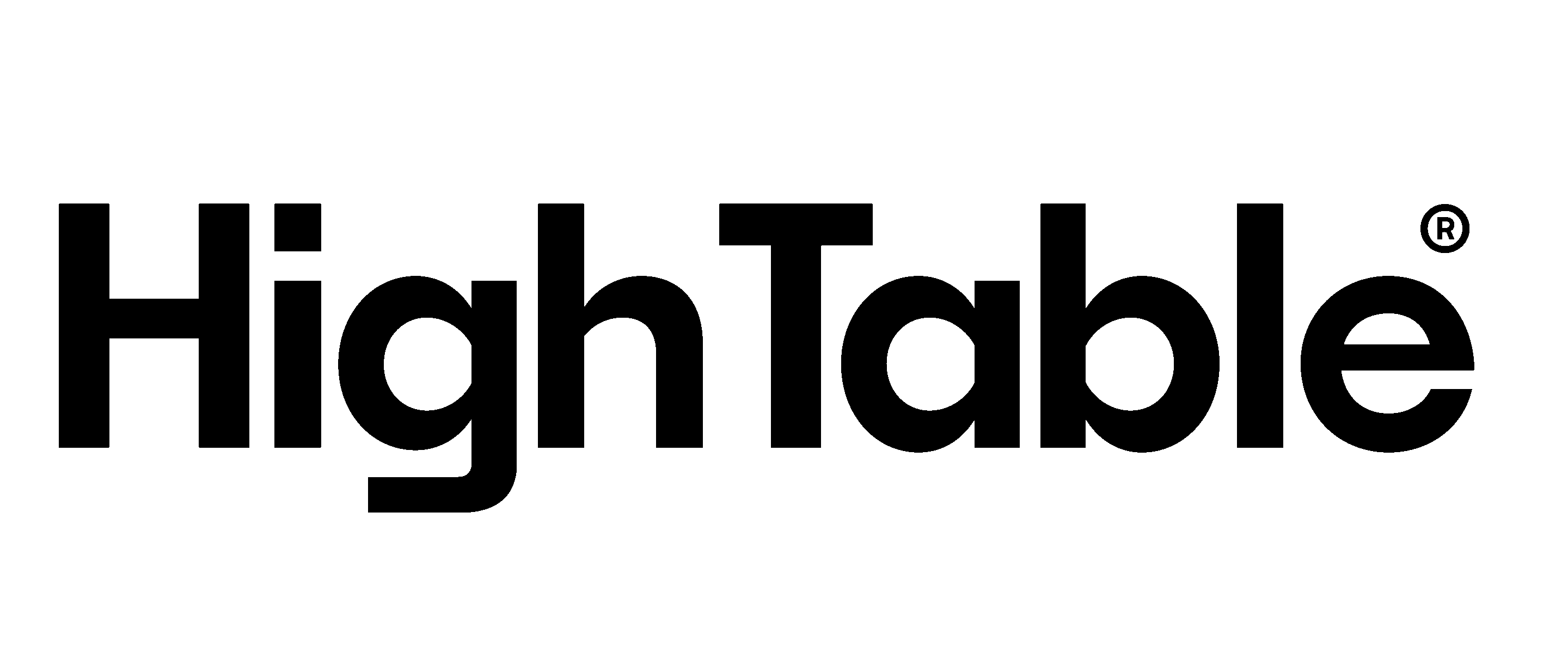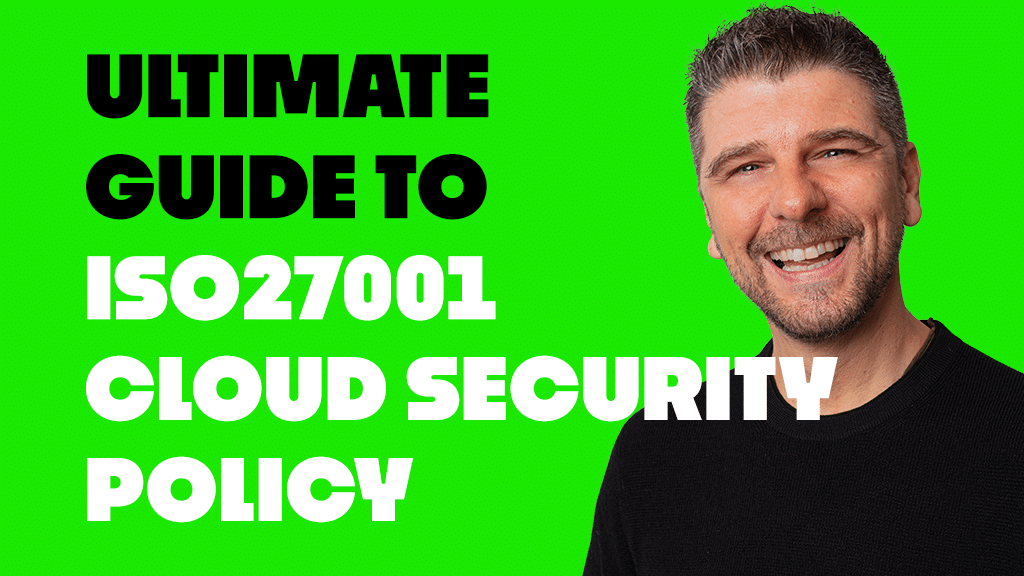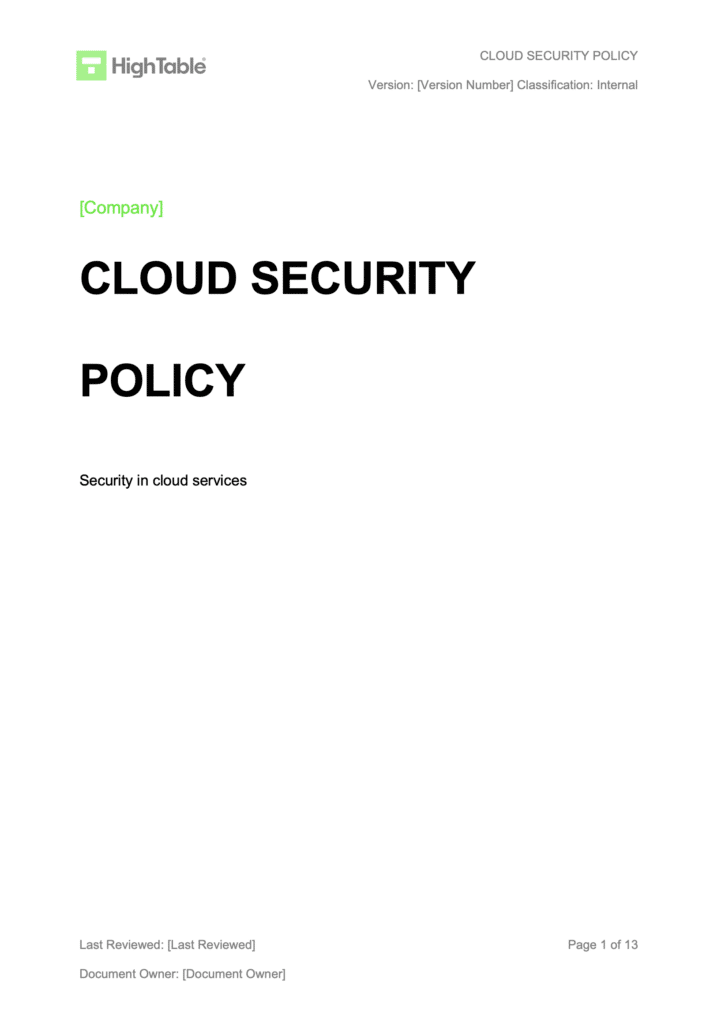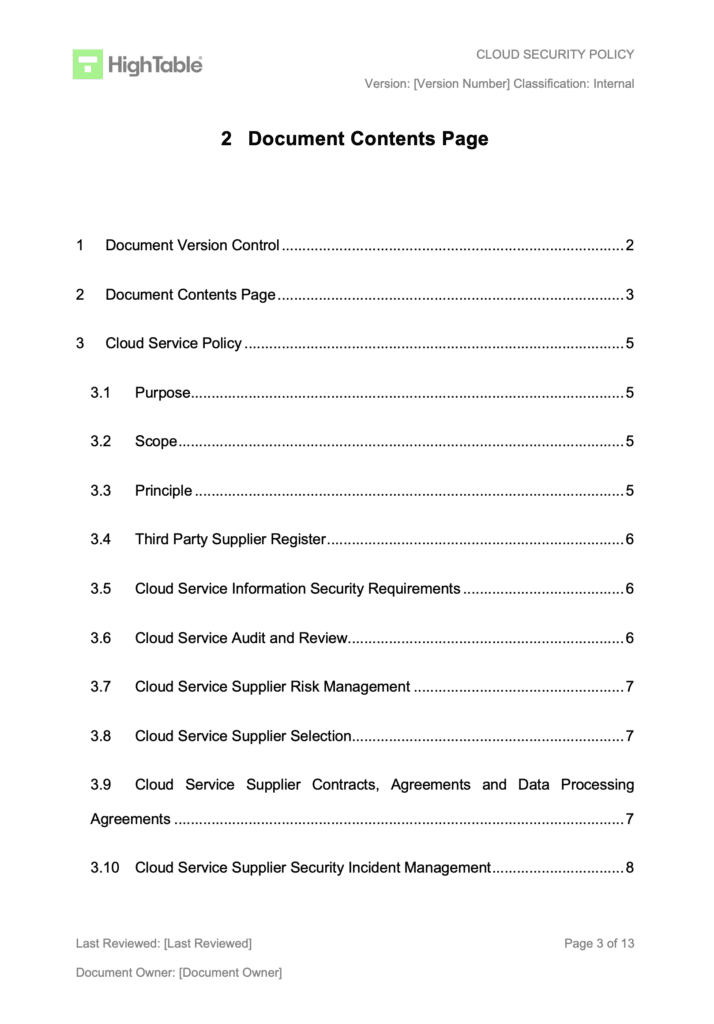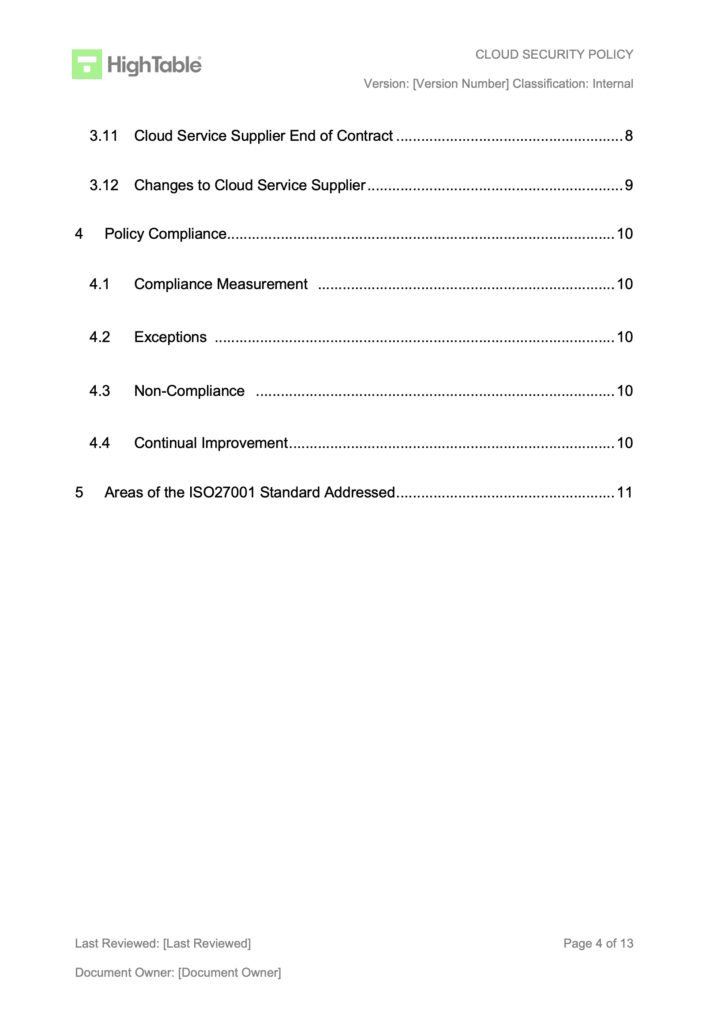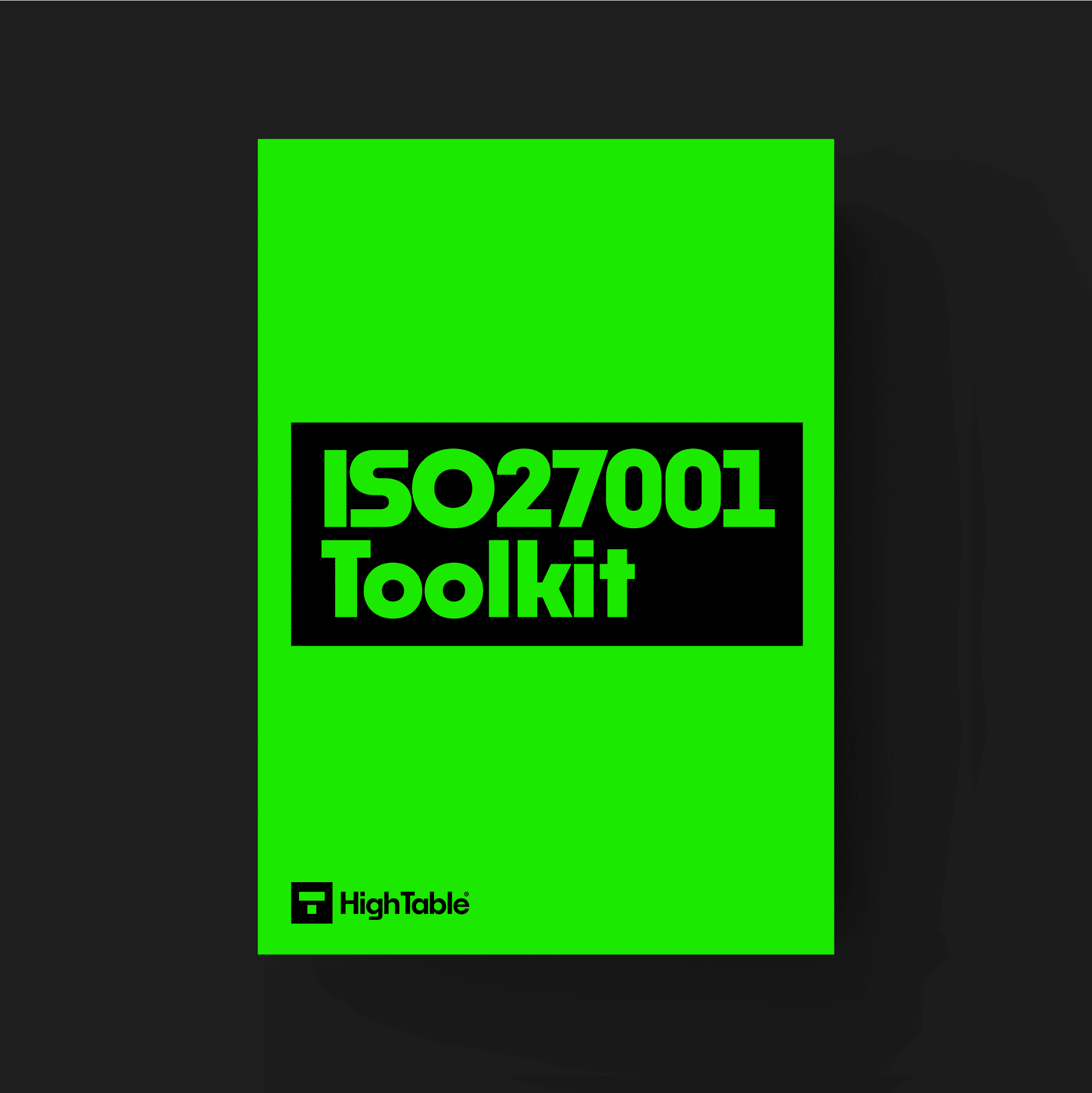An ISO 27001 Cloud Security Policy is essentially your company’s rulebook for making sure that all the data you store or process using cloud services (like Amazon Web Services, Microsoft Azure, or Google Cloud) stays safe and secure.It’s a set of guidelines that tells everyone – your employees and your cloud providers -how to handle information to protect its confidentiality, integrity, and availability.
Table of contents
- What is a Cloud Security Policy?
- ISO 27001 Cloud Security Template
- Applicability to Small Businesses, Tech Startups, and AI Companies
- Why do you need it?
- When do you need it?
- Who needs it?
- Where do you need it?
- What is the Purpose of the ISO 27001 Cloud Security Policy?
- What is the ISO 27001 Cloud Security Principle?
- Why is the ISO 27001 Cloud Security Policy Important?
- What should the ISO 27001 Cloud Security Policy Contain?
- How to write a Cloud Security Policy
- Writing the policy
- Contracts and Incidents
- How to implement it
- Examples of using it for small businesses
- Examples of using it for tech startups
- Examples of using it for AI companies
- How the ISO 27001 toolkit can help
- Information security standards that need it
- List of relevant ISO 27001:2022 controls
- ISO 27001 Cloud Security Policy Example
- What are the benefits of ISO 27001 Cloud Security Policy?
- Who is responsible for the ISO 27001 Cloud Security Policy?
- Who is responsible for implementing the ISO 27001 Cloud Security Policy?
- How do you monitor the effectiveness of the ISO 27001 Cloud Security Policy?
- What are examples of a violation of the Cloud Security Policy?
- What are the consequences of violating the ISO 27001 Cloud Security Policy?
- How often is the Cloud Security Policy reviewed?
- Summary
What is a Cloud Security Policy?
It’s a mandatory document under the ISO 27001:2022 international standard for Information Security Management Systems (ISMS). Its job is to make sure you’ve thought about all the security angles when you use cloud services. You need to clearly lay out the rules for things like picking a cloud provider, what security tasks you’ll do, what security tasks your provider will do, and what to do if you ever stop using that provider.
ISO 27001 Cloud Security Template
The Cloud Security Policy Template is designed to fast track your implementation and give you an exclusive, industry best practice policy template that is pre written and ready to go. It is included in the ISO 27001 toolkit.
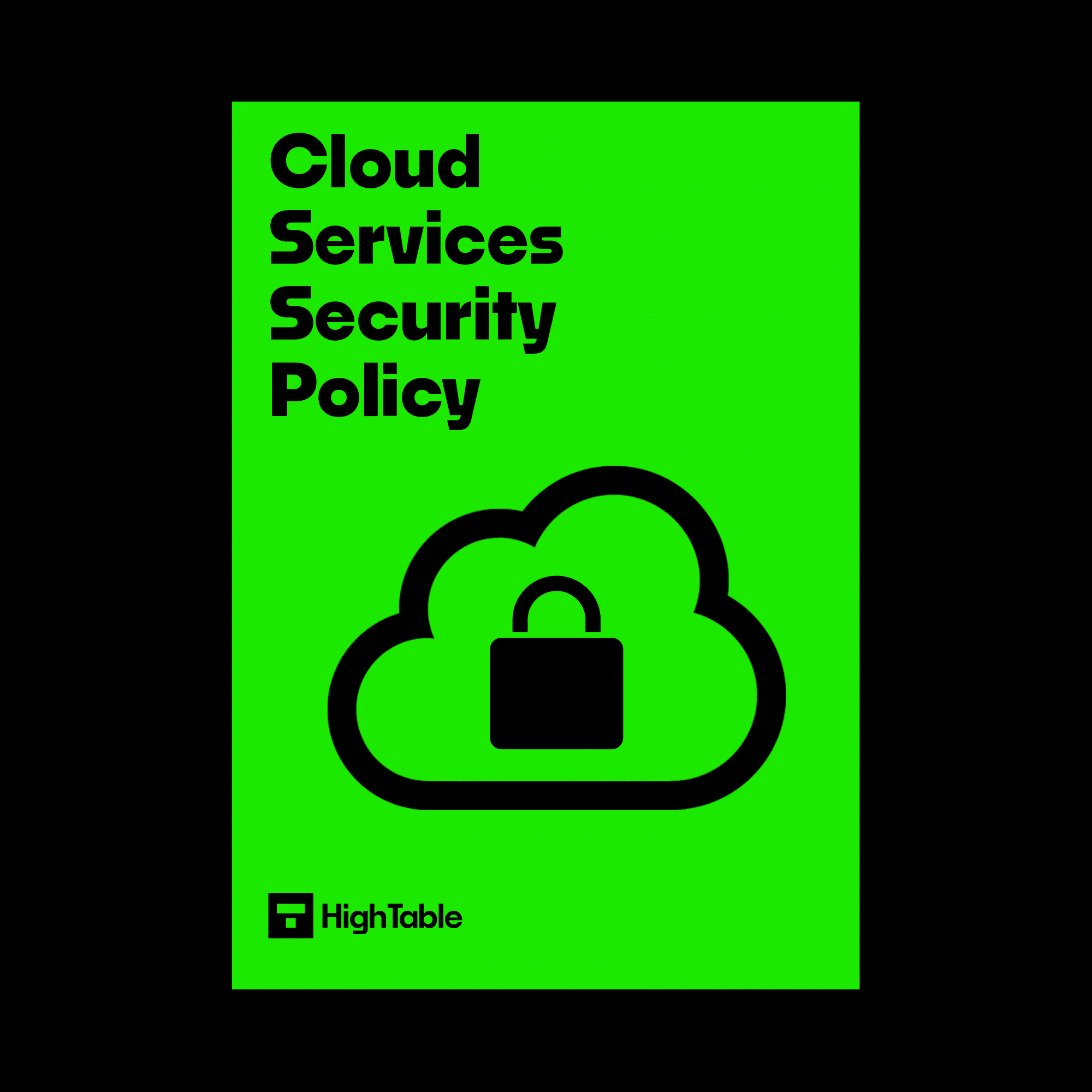
Applicability to Small Businesses, Tech Startups, and AI Companies
This policy is useful for businesses of all sizes, including small businesses, tech startups, and AI companies.
- Small Businesses: You probably use simple, affordable cloud tools (like Google Workspace or accounting software). This policy helps you make sure those tools are protected, even with a small team and budget.
- Tech Startups: You’re building a new product, often directly on the cloud (PaaS/IaaS). The policy ensures security is built-in from the start, protecting your valuable Intellectual Property (IP).
- AI Companies: You’re building a new product, often directly on the cloud (PaaS/IaaS). The policy ensures security is built-in from the start, protecting your valuable Intellectual Property (IP).
Why do you need it?
You need this policy to show you’re serious about protecting your information.
- Trust and Reputation: It gives your customers and partners confidence that you’re managing their data responsibly. For a startup, this can be a huge competitive advantage.
- Risk Reduction: It helps you spot and fix potential security weaknesses in your cloud setup before they cause a data breach.
- Compliance: If you want to achieve or maintain your ISO 27001 certification, you must have this policy to meet the requirements of control ISO 27001:2022 Annex A 5.23 Information Security For Use Of Cloud Services.
- Clear Responsibilities: It defines who is responsible for what (you vs. the cloud provider), so nothing falls through the cracks.
When do you need it?
Ideally, you should create this policy before you start using any cloud service for sensitive data. If you already use the cloud, you need to write it right away as part of setting up or updating your ISO 27001 ISMS. You’ll definitely need it when you:
- Sign a contract with a new cloud provider.
- Update your existing cloud environment or services.
- Are preparing for an ISO 27001 audit.
- Experience any major changes in regulations or your business’s risk profile.
Who needs it?
- Your Organisation: Any company that uses cloud computing to store, process, or transmit information that is important to them or their clients.
- Your Employees: They need to read and follow the policy’s rules on how to safely use cloud services.
- Your Cloud Providers: While they don’t write your policy, your policy dictates the security standards they must meet, which you then verify through contractual agreements.
- The ISO 27001 Auditor: They will check this policy to confirm you meet the standard’s requirements.
Where do you need it?
The policy itself is a document, so you need to store it securely, often within your central repository for ISMS documents. However, the application of the policy is everywhere your organisation uses the cloud:
- Cloud Service Agreements: The policy’s requirements should be reflected in the contracts you sign with providers.
- Internal Procedures: You need to have procedures that match the policy, like how you vet a new cloud provider or how you manage user access to a cloud app.
- Employee Training: The rules need to be communicated and trained to everyone who uses the cloud services.
What is the Purpose of the ISO 27001 Cloud Security Policy?
The purpose of the ISO 27001 Cloud Security Policy is to ensure that your cloud suppliers are meeting your requirements for information security and also meeting their legal and regulatory obligations.
What is the ISO 27001 Cloud Security Principle?
That third party cloud suppliers fully meet the requirements for information security and protect your and your customers data.
Why is the ISO 27001 Cloud Security Policy Important?
Business and organisations rely heavily on cloud service providers. Whilst many of these are big names and big players in the market there are also smaller cloud service providers.
It may well be that we do not have any influence over the cloud supplier and much of the guidance in the ISO 27001 standard and the annex a control would in fact not be possible to implement with them it is still important that we understand, identify, manage and mitigate any risks that there maybe to our information security.
The cloud security policy sets out clearly what our approach to cloud providers is and where we do have an influence what our approach will be.
What should the ISO 27001 Cloud Security Policy Contain?
The ISO 27001 Cloud Security Policy is required to be presented in a certain way. What we mean by that is that the policy is expected to have certain document markup. Document mark up is just a fancy words for having certain information on the policy. It will need version control, a version number, an owner, an information security classification. An example ISO 27001 Cloud Security Policy table of contents would look something like this:
Document Version Control
Document Contents Page
Cloud Service Policy
Purpose
Scope
Principle
Third Party Supplier Register
Cloud Service Information Security Requirements
Cloud Service Audit and Review
Cloud Service Supplier Risk Management
Cloud Service Supplier Selection
Cloud Service Supplier Contracts, Agreements and Data Processing Agreements
Cloud Service Supplier Security Incident Management
Cloud Service Supplier End of Contract
Changes to Cloud Service Supplier
Policy Compliance
Compliance Measurement
Exceptions
Non-Compliance
Continual Improvement
How to write a Cloud Security Policy
Keep it simple and focused! Aim for a Flesch Reading Ease score between 90 and 100 by using short sentences and simple words.
- Define the Scope: State clearly which cloud services, which users, and which types of data this policy covers.
- Define Security Requirements: List your non-negotiable security needs (like data must be encrypted, access must use Multi-Factor Authentication (MFA)).
- Address the Shared Responsibility Model: Clearly spell out what security tasks are your company’s responsibility and what are the cloud provider’s (e.g., your provider secures the infrastructure, but you secure the data inside it).
- Cover Supplier Management: Detail the process for selecting, assessing, and monitoring your cloud providers.
- Plan for the End: Include requirements for the termination of a cloud service (e.g., how the provider must securely delete your data).
Writing the policy
Policy Overview
Purpose of Your Cloud Security Policy
The main goal of your policy is to manage the security of your information whenever you use cloud services.
Scope of Your Cloud Security Policy
This policy applies to you (all employees and third-party users), as well as all external cloud suppliers that handle, store, or send your confidential or personal data.
Core Principle of Your Cloud Security Policy
The fundamental principle is that your third-party cloud suppliers must meet the legal, regulatory, and internal company requirements for data security.
Predefined Cloud Agreements
Following guidance like the one in ISO 27001 Annex A 5.23, you acknowledge that cloud service agreements are often predefined and non-negotiable.
You must state in your policy that your specific cloud service providers fall into this category, meaning the contracts are non-negotiable. The industry standard allows for this reality, and you accept it in your policy. If you find a cloud provider that allows negotiation, you can always amend this section later, but you’ll proceed with this understanding for now.
Managing Cloud Suppliers
Third-Party Supplier Register
Your policy requires that all cloud services are recorded in your Third-Party Supplier Register.
You must assess each cloud service for its criticality to your business and classify it based on the type of data it processes, stores, or transmits.
At a minimum, you must capture the following details in your register:
- The cloud service name and contact information.
- A description of the service provided to you.
- The type of data (confidential, personal, etc.) they handle.
- Confirmation of whether a contract is in place, along with a copy.
- The security assurances you hold for the service.
Action Item: You must complete this register to document all cloud service information security requirements. (You can check resources like hightable.io for a template).
Cloud Service Provider Security Assurance
It is your policy that cloud service suppliers must hold a relevant information security certification that covers the services they provide to you.
As a minimum, you rely on them having either an ISO 27001 certification or a SOC 2 Type 2 Certificate. This means you’re trusting the security work performed by other certifying bodies.
Cloud Service Audit and Review
You must subject your cloud service suppliers to audit and review of their data security. This process will be in line with your existing third-party audit and review procedures.
The depth of this audit and review will be determined by the risk level assigned to the cloud service during the selection process.
Cloud Service Supplier Risk Management
Every cloud service supplier must be entered onto your risk register and managed through your standard risk management process.
Cloud Service Supplier Selection
When selecting a supplier, they must first meet your business needs. Before engaging them, you must conduct data security due diligence. This due diligence must confirm an acceptable level of data security, with any remaining risks clearly identified, recorded, and managed.
Contracts and Incidents
Cloud Service Supplier Contracts
You must have appropriate contracts and agreements in place that include all necessary data security requirements, as well as legal and regulatory compliance clauses.
A proper contract and/or Data Processing Agreement (DPA) must be enforceable and in place before you allow the cloud service supplier to process, store, or transmit your confidential or personal information.
Your contracts and agreements should include the right to audit where this is appropriate, practical, and allowed. However, you acknowledge that major providers usually do not grant this right.
Remember: all of your company’s internal policies apply to your use of the cloud service supplier.
Cloud Service Supplier Incident Management
Your cloud service suppliers must have a security Incident Management process in place.
If a supplier experiences a security incident that affects your confidential or personal information, they must report it to you within 12 hours of becoming aware of the incident. You will then manage the incident as part of your internal Incident Management Process, following the supplier’s own process where appropriate.
Cloud Service Supplier End of Contract
When a contract ends, the cloud supplier must confirm in writing that they have met their contractual and legal obligations for the destruction of your confidential and personal information. You must also ensure that all your accessto their systems and information is revoked.
Cloud Service Supplier Changes
Changes to a cloud service supplier are considered significant changes. They require the formal, written, and documented approval of your CEO.
These changes must follow your existing change management policy and process. Because changing a cloud provider is a significant undertaking, it must be treated as a major project with all associated resource planning, risk management, and project management oversight.
How to implement it
Writing the policy is just the first step; you need to put it into action!
- Get Management Buy-in: Your company’s leaders must officially approve the policy and give it the authority it needs.
- Communicate and Train: Teach all your employees and contractors what the policy says and how to follow it.
- Create Procedures: Develop detailed, step-by-step documents (like a “Cloud Provider Vetting Checklist”) that turn the high-level policy into daily tasks.
- Monitor and Audit: Regularly check your cloud providers and your internal teams to make sure they are following the policy. Treat this like an ongoing process, not a one-time thing.
Examples of using it for small businesses
Your policy says all external cloud services must be SOC 2 or ISO 27001 certified. You check this before you sign up for a new project management app to ensure their security meets your standards.
Examples of using it for tech startups
Your policy dictates that your main cloud database (IaaS/PaaS) must use a separate, dedicated account for production data, and access is only granted via Role-Based Access Control (RBAC) to prevent a developer from accidentally deleting a customer database.
Examples of using it for AI companies
Your policy mandates data anonymization or pseudonymization for all customer data before it’s used to train your AI models in the cloud, helping you comply with data privacy laws like GDPR.
How the ISO 27001 toolkit can help
An ISO 27001 toolkit is like a toolbox full of pre-made documents and guides. It gives you a head start on creating your policy and other important security documents, saving you a ton of time and effort. It’s a great way to make sure you don’t miss anything.

Information security standards that need it
This policy is a key part of ISO 27001, which is an international standard for managing information security. Other standards that need it include:
- GDPR (General Data Protection Regulation)
- CCPA (California Consumer Privacy Act)
- DORA (Digital Operational Resilience Act)
- NIS2 (Network and Information Security (NIS) Directive)
- SOC 2 (Service Organisation Control 2)
- NIST (National Institute of Standards and Technology)
- HIPAA (Health Insurance Portability and Accountability Act)
List of relevant ISO 27001:2022 controls
The following are ISO 27001 controls relevant to cloud security to consider for further reading:
ISO 27001:2022 Annex A 5.23 Information Security For Use Of Cloud Services.
ISO 27001 Cloud Security Policy Example
This is a great example of the cloud security policy. Taking the first 3 pages being the contents of what it includes.
What are the benefits of ISO 27001 Cloud Security Policy?
Other that your ISO 27001 certification requiring the following are benefits of having the ISO 27001 Cloud Security Policy :
- Improved security: You will have assurance that the cloud supplier is protecting your and your customers data and meeting their contractual, legal and regulator obligations for information security
- Reduced risk: Ensuring that the cloud provider has good information security will reduce the risk of attack and exploit
- Improved compliance: Standards and regulations require third party suppliers and cloud suppliers to be secure and that you are managing and securing your supply chain
- Reputation Protection: In the event of a breach having effective cloud provider management will reduce the potential for fines and reduce the PR impact of an event
Who is responsible for the ISO 27001 Cloud Security Policy?
The head of IT is responsible for the ISO 27001 Cloud Security Policy.
Who is responsible for implementing the ISO 27001 Cloud Security Policy?
The IT department are responsible for implementing and managing the requirements of the ISO 27001 Cloud Security Policy.
How do you monitor the effectiveness of the ISO 27001 Cloud Security Policy?
The approaches to monitoring the effectives of cloud supplier security include:
- Obtaining relevant industry information security certificates
- Internal audit of the supplier management process
- External audit of the management process
- Review of cloud provider service and technical reports
What are examples of a violation of the Cloud Security Policy?
Examples of where the policy can fail or violations of the ISO 27001 Cloud Security Policy can include:
- Not having contracts in place with cloud providers
- Having contracts in place but they do not cover information security requirements
- Not being able to get information security assurance for cloud providers
- Not addressing cloud providers as part of risk management
What are the consequences of violating the ISO 27001 Cloud Security Policy?
Not managing cloud suppliers and their information security responsibilities can have severe consequences for information security and the confidentiality, integrity and availability of data and systems.
The consequences could be legal and regulatory fines and / or enforcement, loss of data, loss of revenue, loss of clients and customers, negative PR.
How often is the Cloud Security Policy reviewed?
The Cloud Security Policy is reviewed after any significant change that affects cloud providers or cloud services and at least annually.
Summary
When it comes to your cloud service supplier, you’re treating them just like any other external vendor. Your policy states upfront that, while it exists, the supplier’s contract and agreement ultimately take precedence.
Your Approach to Cloud Provider Management
You know you’ll have very little flexibility with major cloud providers like AWS. You can’t simply demand a dedicated account manager or specific extra services; they won’t agree to those things. So, what’s your best strategy?
You ensure the best practices for managing any third-party supplier are in place. You have a general policy that covers all cloud service providers. However, you acknowledge that if your supplier’s agreement doesn’t permit something—and this is acceptable under relevant industry standards and guidance—then you will accept that limitation.
In short, you apply standard vendor management practices but remain flexible enough to conform to the unyielding reality of a major cloud provider’s terms.
